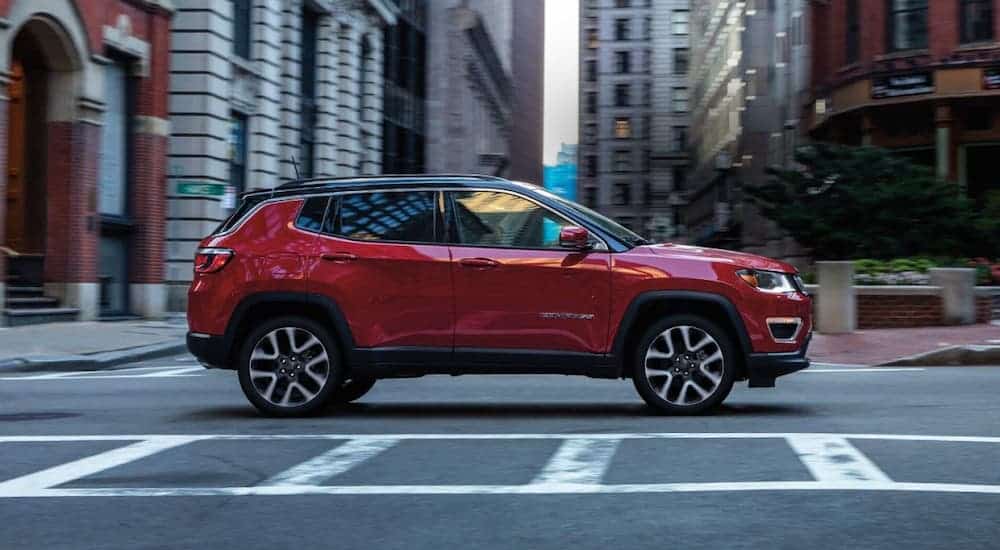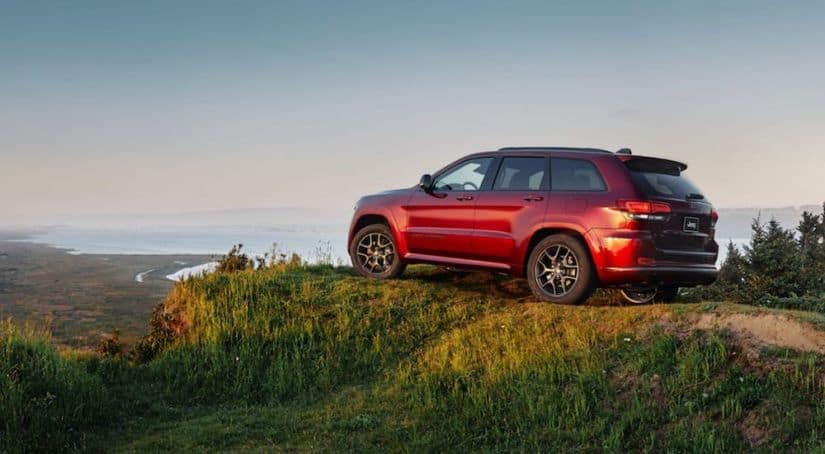There is no denying the fact that buying a used SUV for sale will allow you to get a better deal than purchasing new. The most significant benefit from doing so is that the vehicle has already taken a major depreciation hit during its first two years of original ownership by someone else. But there are a number of other reasons that buying used is a good choice. For example, you can find out plenty of information on the different makes and models available, since these vehicles have been on the road for a number of years. Any bugs or recalls are most likely to have already appeared.
You can also find plenty of information on the specific used SUV you are looking to buy just by having its vehicle identification number (VIN) to order a vehicle history report from AutoCheck or Carfax. And best of all, by checking out the age, condition, and mileage of the different used SUVs, you can help figure out the right value for you. But how do you navigate the used SUV market? What should you be looking for? Well, today, we are going to provide you with some pointers on doing just that. So without further ado, let’s get into it!
SUVs Come in Different Shapes and Sizes
Right off the bat, you have to figure out the right size SUV to meet your needs. Compact SUVs are perfect for a single person or a couple with no kids, as they are easy to drive, have incredible fuel economy, are very affordable, and just the right amount of cargo space for a trip for two. However, even though the rear seats have room for another two or three passengers, they tend to be cramped, which is not ideal for an extended drive. This is where crossovers and small SUVs come into play. These are just as drivable as compact SUVs, and also have excellent fuel economy. However, they tend to have more interior space for passengers and cargo, and bigger engines for better overall performance.
The midsize SUV is the most versatile size of this vehicle type. They provide larger interior and cargo space than the average crossover and bigger engines. Some of these have two rows of seats with space for up to five passengers, while others have three rows with seating for up to eight passengers. However, there is a little trade-off when choosing between two and three-row models. If you select a two-row model, you are limited to only five passengers maximum on your trip, although the trunks on two-row midsize SUVs tend to be quite roomy. With three-row models, you trade some trunk space for the ability to carry those two or three extra passengers. It is important to keep all of this in mind when selecting a midsize model.
The largest SUVs are known as full-size. They have plenty of room for both passengers and cargo, even without having to fold down the third row of seats. In addition, they typically have eight-cylinder engines, providing a great deal of horsepower and torque. These are ideal models if you are looking to go camping, as they can handle some of the heaviest towing jobs. The downside of these full-size SUVs is that they are much harder to drive as many of the largest ones are built on pickup truck platforms, unlike compact SUVs, crossovers, and many midsize SUVs that are built on similar suspension systems as sedans. If you are not comfortable driving a truck, then a full-size SUV may not be for you. These will also typically cost the most of any used SUV model. So, the compromise with used full-size SUVs is the price tag.

Front-Wheel, Rear-Wheel, or All-Wheel Drive?
Another big decision that comes into play is the drivetrain. Most SUVs come either front-wheel or rear-wheel drive standard with available all-wheel drive. Typically, the all-wheel drive models will cost more. The benefit of an all-wheel drive SUV is that with all four wheels active, the vehicle will usually perform better on rougher road surfaces and in inclement weather. This is why all off-road vehicles are all-wheel drive.
The drawback is that all-wheel drive vehicles tend to be less fuel-efficient than those that are front and rear-wheel drive. And, on the other hand, used front-wheel drive SUVs will be more fuel-efficient and have good handling, but may not be ideal for towing trailers. A rear-wheel drive SUV will usually have a high trailering rating; however, they are generally not as maneuverable in snow and ice as front and all-wheel drive vehicles. Therefore, when choosing a drivetrain, you should take your area’s weather and your need to tow into consideration.
Luxury vs Utility
Most folks buy a used SUV for its versatility. This is the “utility” part of the SUV’s name. However, several luxury automakers have come out with super-luxury SUV models. I’m sure you are familiar with many of them: the Cadillac Escalade, BMW X-7, Jaguar F-Pace, and the Lexus LX. These luxury vehicles have sport-tuned engines, performance wheels and suspension systems, and all of the modern conveniences. They tend to feature fully loaded infotainment systems with premium audio systems and leather seats with chrome and real wood accents.
As expected, luxury SUVs have price tags to match their luxury features. With that said, if this is the type of model that interests you, then you are likely to experience some substantial savings when you buy one used vs new. Depending on age, mileage, and condition, a used luxury SUV can have some serious discounts, making them comparable in price to a new make and model from a non-luxury automotive company of the same size. So, if you are interested in buying one of these aspirational beauties, then your best bet would be to buy used.

Do You Want to Take it Off-Road?
The sport of off-roading has been getting increasingly popular in recent years, and as a result, automakers have been making dedicated off-road SUV models and trims. These are not aftermarket retrofitting, but SUVs that have been built from the wheel and frames up to provide you with the ability to drive it over some of the toughest terrain.
These SUVs will feature specialized shocks, skid plates to protect critical parts on the vehicle, raised differentials, all-wheel drivetrains, and special wheels and tires. Many even have hooks to assist you in getting your off-road SUV over boulders and other obstacles. Some examples of these can be found in the Jeep lineup, as all Jeep SUVs are trail-rated, including the Wrangler, Renegade, Cherokee, Grand Cherokee, and Compass.
This means that the Jeep with the 4X4 drivetrain has succeeded in five different tests involving traction, water fording, maneuverability, articulation, and ground clearance. This gives you the peace of mind that when you buy a used Jeep SUV that is trail-rated, your vehicle can handle whatever the off-road trail might throw in its way. Therefore, if you intend to go off-roading with your used SUV, you should check beforehand to make sure the model you are buying has the proper features for tackling the toughest trail.
Picking the Right SUV
All in all, when choosing the right used SUV for you, it comes down to what you need out of the vehicle. It is undeniable that purchasing used will save you loads of money and give you access to all the information you need about a vehicle. So now, all you need to do is figure out what you need from your SUV and start looking around the used market!



